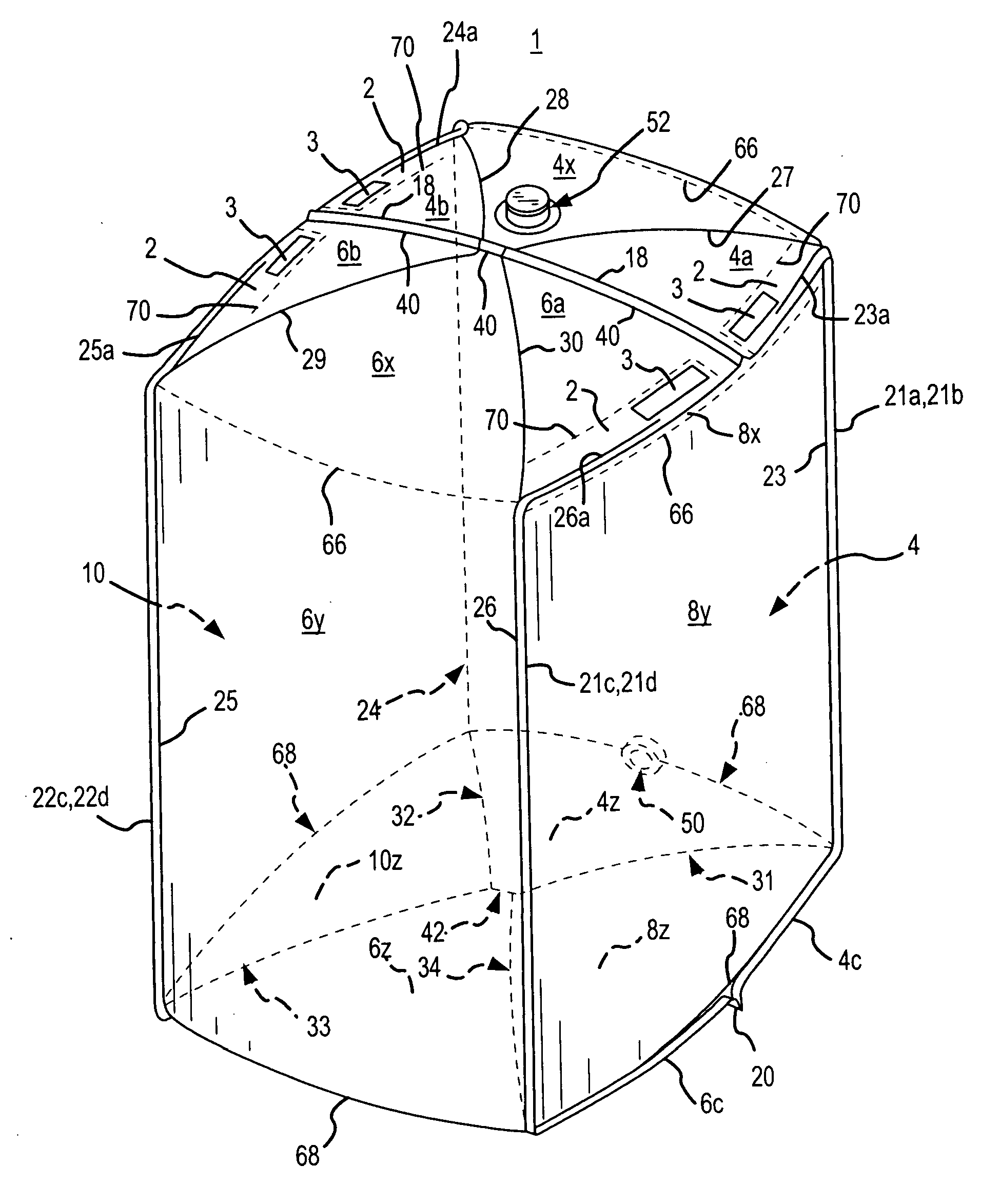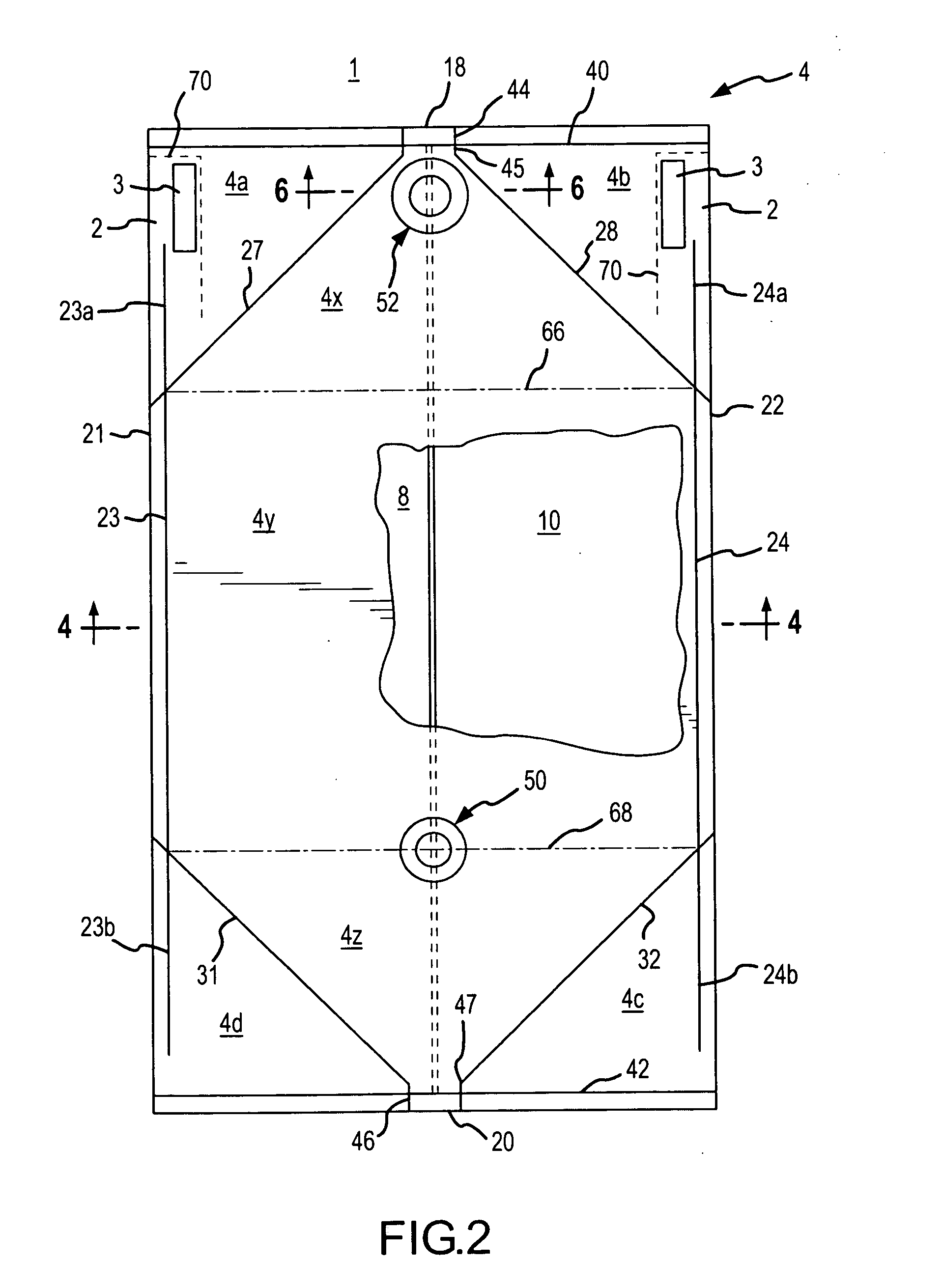Flexible liner for FIBC or bag-in-box container systems
a container system and flexible technology, applied in the field of flexible liners, can solve the problems of difficult to completely fill or empty the liner, the evacuated portion of the liner has a tendency to collapse, and the bag may collapse, etc., to facilitate the attachment of the tab
- Summary
- Abstract
- Description
- Claims
- Application Information
AI Technical Summary
Problems solved by technology
Method used
Image
Examples
Embodiment Construction
[0046] The present invention is directed to a flexible liner 1 for use in bulk containers such as those used in flexible intermediate bulk container (“FIBC”) systems or bag-in-box container systems. Generally speaking, in one embodiment, the flexible liner 1 of the present invention has integrally formed tabs 2 that are partially separable from the liner 1 for connection to an outer container (i.e., the bag of a FIBC system or the box of a bag-in-box system) and / or use in a winder system that can be used to facilitate the emptying of the liner 1.
[0047]FIG. 1 is a top isometric view of the liner 1 in its inflated or filled state. As illustrated in FIG. 1, in one embodiment, the tabs 2 are located near the top portion of the liner 1 and are provided with an attachment feature 3 for securing the tabs 2 to the outer container. Depending on the embodiment, the attachment feature 3 may be a strip of tape, a strip of fabric or another reinforcing material, or a hole through the tab 2. In ...
PUM
| Property | Measurement | Unit |
|---|---|---|
| volume | aaaaa | aaaaa |
| volume | aaaaa | aaaaa |
| flexible | aaaaa | aaaaa |
Abstract
Description
Claims
Application Information
 Login to View More
Login to View More - R&D
- Intellectual Property
- Life Sciences
- Materials
- Tech Scout
- Unparalleled Data Quality
- Higher Quality Content
- 60% Fewer Hallucinations
Browse by: Latest US Patents, China's latest patents, Technical Efficacy Thesaurus, Application Domain, Technology Topic, Popular Technical Reports.
© 2025 PatSnap. All rights reserved.Legal|Privacy policy|Modern Slavery Act Transparency Statement|Sitemap|About US| Contact US: help@patsnap.com



